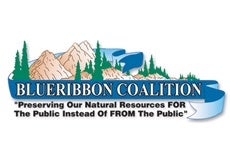 BlueRibbon Coalition sent over this update after receiving an email from the New Mexico Off Highway Vehicle Alliance (NMOHVA), with their latest Access Alert on the Santa Fe National Forest.
BlueRibbon Coalition sent over this update after receiving an email from the New Mexico Off Highway Vehicle Alliance (NMOHVA), with their latest Access Alert on the Santa Fe National Forest.
We’ve pasted NMOHVA’s Action Alert below. Please take a minute to read the alert, take action and then pass it along to friends, family and riding buddies:
The New Mexico Off Highway Vehicle Alliance (NMOHVA) filed a lawsuit against the Santa Fe National Forest in federal district court on December 11th. Our lawsuit contests the Forest’s Travel Management decision signed by Forest Supervisor Maria T. Garcia on June 12th and upheld by the Region 3 Appeal Deciding Officer on October 2nd. Filing a lawsuit is a major commitment of NMOHVA’s time and money. The NMOHVA Board thought long and hard about this and then voted unanimously to go ahead with legal action.
“NMOHVA filed this lawsuit on the behalf of our members but it really is for everyone who uses a vehicle in the forest,” said NMOHVA President Jim Tyldesley. “Most of the public has no idea that this decision closed 70% of the existing roads and trails, reduced vehicle camping nearly 95%, and virtually eliminated hunters being able to use a vehicle to retrieve game. There are going to be a lot of stunned people next spring when they find out vehicle camping is not allowed anywhere along Forest Road 376. It was the most popular camping area in the whole forest!”
Basis for the Lawsuit: Every lawsuit is based on an accusation that a law has been broken. What law was broken when the Santa Fe National Forest decided to close over 70% of the roads and trails to all motorized use? The law being broken is the National Environmental Policy Act (NEPA). When a federal agency closes routes, people might think it is done “under NEPA”. But, NEPA itself doesn’t “close” anything; the law just requires that the Forest Service follow certain rules when they make land use decisions. Our lawsuit says they didn’t follow those rules.
NEPA is an Effective Tool: NEPA requires that a full and fair analysis of environmental impact be made and disclosed to the public. NEPA is our only legal defense against route closures that are made when the Forest Service doesn’t use a full and fair analysis. NMOHVA’s lawsuit is based on facts in the agency’s documents. These facts show the agendy violated many NEPA regulations. Violations include how the scientific analysis was completed, lack of data, and failure to properly examine how the closures will affect the public.
How the EIS Breaks the Law: If the EIS had been done honestly, it would not propose massive closures, because nothing in the EIS shows that vehicle use is causing significant forest-wide resource damage. There is not a single statement, study or piece of data saying vehicle use caused any specific problem in any specific place. But the EIS is not honest. Here are some examples of what we mean by that:
NEPA regulations say the EIS must disclose all the science and analysis and the decision must be based only on what is included in the EIS. But letters from the Santa Fe National Forest to green extremists show the agency decided to close trails in the Jemez Mountain salamander habitat before the EIS process was even started. It is illegal under NEPA to make decisions prior to the EIS. In other words, the EIS analysis of the salamander was just a smokescreen designed to hide the fact that a decision to close trails had already been made. Those dated letters are in the Project Record. The Project Record is the collection of over 900 documents that is the official record of all the work done to prepare the EIS.
The EIS ignores the studies of the agency’s own scientists which concluded that motorized use isn’t causing significant damage to anything. Those studies are part of the Project Record. Under NEPA, those conclusions cannot be omitted. The EIS made conclusions that contradict its own science. NEPA requires that the EIS be rational, consistent and based on proper science; this EIS violated those rules.
The EIS says irrational things. It claims trails must be closed because vehicles could run over a salamander. But the science in the Project Record says the Jemez Mountain salamander lives underground in rock crevices. The only time a salamander comes to the surface is on rainy summer nights.
The EIS rigged the results by excluding over 1800 miles of Forest Service system roads and trails from the study.
NMOHVA has posted a list of Frequently Asked Questions on our website at www.nmohva.org on both the lawsuit and the Travel Managements Decision. We will keep the site updated with all of the latest news and information concerning this action.
What Comes Next: It will probably take a year before the case is concluded and the court makes its decision. We often get asked, “What can we do that will really help keep roads and trails open?” With an active lawsuit on our hands, the answer gets really simple:
What YOU Can Do: Donate to the NMOHVA Access Defense Fund!
Lawsuits are very expensive and only used when all other options have been exhausted and only when an issue is important enough to commit NMOHVA’s limited resources. We have been trying to work with the Santa Fe National Forest since 2005 and they have refused to listen. The place to make a stand is here. The time to fight is now! We call on all of our members and friends to stand with us and help us fight this decision.